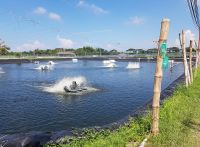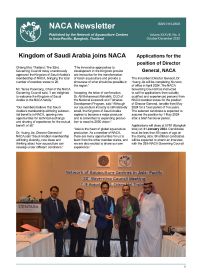The Late Sri Kripan Sarkar was an enterprising ornamental fish breeder-cum-farmer par excellence, exporter and supplier of the same from northern part of West Bengal. As proprietor of Rainbow Ornamental Fish Farm, at Bakshipara Village in Jalpaiguri District, he was an expert and authority in scientific breeding, larval rearing, propagation, research and experimentation on economically important freshwater ornamental fishes. There was a time when Sri Sarkar was the only commercial ornamental fish breeder in north Bengal. This article documents his experiences and career as an influential pioneer in the ornamental fish culture trade.
How welfare assessments of farmed white leg shrimp (Penaeus vannamei) can benefit the whole industry
The welfare of decapod crustaceans, the largest group of farmed animals worldwide, is gaining prominence in the aquaculture industry. Taking better care of the billions of shrimp farmed annually not only responds to certification standards and consumer demand, it is the right thing to do. Embracing a welfare approach has the potential to address current challenges in shrimp farming by providing insights into farming conditions and animal health, ultimately boosting production performance. Recording welfare data enhances transparency along the supply chain, ensuring that every actor, from hatcheries to shrimp buyers, understands the quality of the breeder, post larvae, or shrimp they purchase. This article also details a free online training course on shrimp welfare created by FAI Farms.
With the implementation of the new aquatic animal disease reporting in the Asia Pacific region from January 2021, and in lieu of the published QAAD Reports (last issue published was 4th quarter of 2020), NACA is publishing reported aquatic animal diseases submitted by countries in the Asia-Pacific region. This report covers the second quarter of 2023 and the original and updated reports can be accessed from the QAAD page.
In this issue:
Kingdom of Saudi Arabia joins NACA; Applications for the position of Director General, NACA; NACA awarded the Aziz-Ul Haq Rural Development Medal; Training Course on Risk Analysis in the Aquaculture Value Chain held in Bangkok; Free FAO publication: Genetic management of Indian major carps; 7th International Symposium on Cage Aquaculture in Asia; PhD scholarships: Shanghai Ocean University PhD Programme 2024; WAS Journal Special Issue: Global Conference on Aquaculture Millennium +20 Thematic Reviews; Seminar on Artemia Research and Production: Videos; Reported aquatic animal diseases in the Asia-Pacific Region during the first quarter of 2023.
Eight thematic reviews prepared as preparation for the Global Conference on Aquaculture Millennium +20 (GCA +20) have been published in a Special Issue of the Journal of the World Aquaculture Society "Aquaculture for Food and Sustainable Development". A group of experts prepared advanced working drafts of each thematic review and the key findings from each theme were presented and discussed by expert panels during the GCA +20. Participants were then invited to provide their feedback and perspectives on the reviews and their key messages for consideration in finalisation of the papers. The reviews are available for free download.


